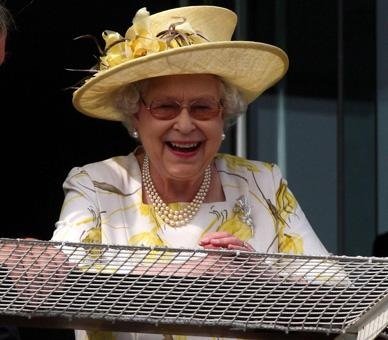Early life
Her Majesty the Queen was born on 21 April 1926 in London, the first child of Prince Albert, The Duke of York, and his wife, formerly Lady Elizabeth Bowes-Lyon.
Third in line to the throne, it seemed unlikely that Princess Elizabeth would be Queen. However, shortly after the death of George V, the new King – her uncle Edward VIII – dramatically abdicated so he could marry Wallis Simpson, an American divorcee. Princess Elizabeth’s father then became King George VI and she became heir to the throne.
Princess Elizabeth and her younger sister Princess Margaret were educated at home. During the Blitz in 1940, they were moved to Windsor Castle and stayed there for most of the Second World War. In 1945, Princess Elizabeth joined the war effort, training as a driver in the Women’s Auxiliary Territorial Service (WATS).
Princess, wife, mother
In November 1947, she married a distant cousin, Philip Mountbatten, who was then created His Royal Highness The Prince Philip, Duke of Edinburgh. The wedding – which took place during the austere post-War years – was described by Winston Churchill as a ‘flash of colour’. The Princess used ration coupons to buy the material for her dress.
The couple have four children. Prince Charles, The Prince of Wales, is the eldest and next in line to throne. Both he and Princess Anne, The Princess Royal were born before their mother became Queen. Prince Andrew, The Duke of York and Prince Edward, The Earl of Wessex are the only two children to be born to a reigning monarch since Queen Victoria.
Accession and coronation
George VI died on 6 February 1952 while Princess Elizabeth and Prince Philip were touring Kenya. She returned home immediately and acceded to the throne. After months of preparation, Queen Elizabeth II was crowned at Westminster Abbey on 2 June 1953. For the first time, the ceremony and the huge public celebrations were broadcast by TV across the UK, the Commonwealth and the rest of the world.
A young and glamorous Queen
On her accession, the Queen immediately began her political duties which included opening Parliament and receiving her prime ministers. Throughout the 1950s, the Queen and Prince Philip cut young and glamorous figures as they extensively toured the UK and the Commonwealth.
During the 1960s, the Queen made historic visits to West Berlin at the height of the Cold War, and welcomed Emperor Hirohito of Japan on a state visit to Britain. Against a backdrop of political and social unrest, she celebrated her Silver Jubilee in 1977. It was a huge success and tens of thousands of street parties were thrown by the public across the country.
The 1980s onwards
Five years later, the UK was at war over the Falkland Islands during which Prince Andrew served with the Royal Navy as a helicopter pilot. The 1980s also saw the birth of her first grandchildren, Peter and Zara Phillips.
Disaster struck in 1992 when a devastating fire broke out in Windsor Castle. The same year the respective marriages of Prince Charles, Prince Andrew and Princess Anne disintegrated. The Queen deemed this her ‘annus horribilis’. Tragedy was to follow in 1997, when Diana, Princess of Wales was killed in a car accident.
And 2002 was another year of personal sadness for the Queen, as both her sister Princess Margaret and the Queen Mother died, casting a shadow over the Golden Jubilee celebrations a few months later.
The Diamond Queen
For the last 60 years, during a period of great change in Britain, the Queen has continued to carry out her political duties as head of state, her role as head of the Commonwealth, the ceremonial responsibilities of the sovereign, and a large annual programme of visits in the UK as well as many foreign tours.
The Queen has also made numerous reforms to the monarchy during her reign. In 1992, she offered to start paying income and capital gains tax. She has opened her official residencies to the public – including Buckingham Palace and Windsor Castle – in order to finance their maintenance.
She supported ending the rule of male primogeniture, which now means the eldest child can succeed to the throne, regardless of gender. She also supported lifting the ban on anyone in the line of succession marrying a Catholic.
Her reign has heralded the introduction of less formal engagements and visits, and the introduction of the ‘walkabout’ – the meeting and greeting of large numbers of the public.
In 2002, the Queen celebrated 50 years on the throne; in 2006, her 80th birthday; and in 2012, her Diamond Jubilee. The Jubilee will be marked by celebrations across the UK throughout the year.
Official website of The Diamond Jubilee: http://www.thediamondjubilee.org/

